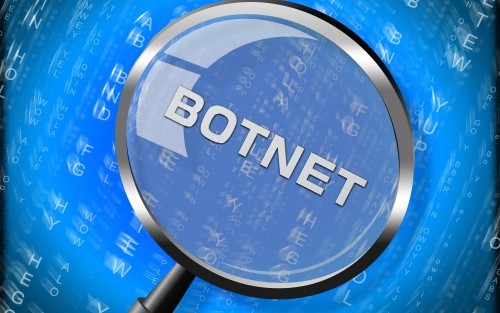


Introduction:
In today's interconnected world, the internet has revolutionised the way we communicate, work, and interact. However, as the digital landscape expands, so does the risk of cyber threats.
Among these threats, one of the most notorious and pervasive is the botnet. This article aims to shed light on the concept of botnets, their mechanisms, and the challenges they pose to individuals, organisations, and even nations.
1. What is a Botnet?
A botnet is a network of compromised computers, known as "bots" or "zombies," that are under the control of a central command centre, often operated by a malicious actor. These compromised machines are typically infected with malware, allowing the botmaster to remotely control and manipulate them as a collective entity.
2. The Anatomy of a Botnet:
A botnet consists of three fundamental components:

The botmaster orchestrates the network, issuing commands and controlling the actions of the infected machines.
The C&C infrastructure serves as the communication channel between the botmaster and the bots, while the compromised bots carry out the malicious activities, which can include launching DDoS attacks, spreading malware, or engaging in spam campaigns.
3. Botnet Formation and Propagation:
Botnets are typically created through various means, such as exploiting software vulnerabilities, social engineering, or distributing malicious email attachments. Once a computer is infected, the malware establishes a connection with the C&C server, allowing the botmaster to maintain control over the botnet and issue commands remotely. Botnets can rapidly grow in size, with new bots being added through automated propagation mechanisms.
4. The Dangers of Botnets:
Botnets pose significant threats to individuals, businesses, and critical infrastructure. They can be employed for various malicious activities, including:
a. DDoS Attacks: Botnets are commonly used to launch Distributed Denial of Service (DDoS) attacks, where a massive influx of traffic overwhelms a target website or service, rendering it inaccessible.
b. Information Theft: Botnets can be utilised to harvest personal information, login credentials, and financial data, often leading to identity theft and financial fraud.
c. Spam Distribution: Botnets are responsible for a substantial portion of the world's spam emails, enabling the propagation of phishing attempts, malware, and other malicious content.
5. Combating Botnets:
Tackling botnets requires a multi-faceted approach involving various stakeholders. Some key strategies include:
a. Security Measures: Employing robust security measures, such as regularly updating software, using strong passwords, and deploying firewalls and antivirus software, can help prevent botnet infections.
b. Network Monitoring: Implementing network monitoring systems can help identify botnet activities and enable the timely mitigation of threats.
c. Collaboration and Information Sharing: Governments, law enforcement agencies, cybersecurity firms, and internet service providers must collaborate and share information to track, neutralise, and dismantle botnets.
d. Public Awareness and Education: Raising awareness about botnets, their risks, and preventive measures is crucial to empowering individuals and organisations to protect themselves from these threats.
6. Evolving Botnet Technologies:
Botnets are continuously evolving to evade detection and enhance their capabilities. Some of the emerging trends in botnet technologies include:
a. Peer-to-Peer (P2P) Botnets: Traditional botnets rely on centralised C&C servers, making them vulnerable to takedowns. P2P botnets, on the other hand, utilise decentralised communication protocols, making it harder to dismantle them.
b. Fast Flux Botnets: Fast Flux techniques involve rapidly changing the IP addresses associated with botnet infrastructure, making it difficult to track and block malicious activities.
c. Mobile Botnets: With the proliferation of smartphones and mobile devices, botnets have expanded to target these platforms, infecting mobile devices and leveraging their resources for malicious purposes.
8. Botnets and Cybercrime:
Botnets play a significant role in facilitating various forms of cybercrime. They are often rented or sold on the dark web as "botnet-as-a-service" (BaaS), allowing cybercriminals with minimal technical knowledge to launch attacks for their nefarious purposes.
9. Nation-State Sponsored Botnets:
In addition to cybercriminals, nation-states have been known to utilise botnets for espionage, disruption, or cyber warfare. State-sponsored botnets can be deployed to conduct large-scale attacks on critical infrastructure, infiltrate governmental systems, or gather intelligence.
10. Botnet Detection and Mitigation:
Detecting and mitigating botnets is a complex challenge that requires advanced cybersecurity measures. Some common techniques used to combat botnets include:
a. Signature-Based Detection: Antivirus software and intrusion detection systems (IDS) use signature-based detection to identify known botnet malware. However, this method is less effective against new or unknown botnet variants.
b. Behaviour-Based Detection: Employing anomaly detection algorithms can help identify suspicious behaviours exhibited by infected machines, such as unusual network traffic or resource consumption patterns.
c. Sinkholing and Takeovers: Security researchers and law enforcement agencies sometimes take control of the C&C servers or domain names associated with botnets, effectively neutralising their operations.
d. Botnet Tracking and Attribution: Tracing the origin of botnet attacks and identifying the responsible individuals or groups is crucial for legal action and preventing future attacks.
11. Future Challenges and Mitigation Strategies:
As technology evolves, so do botnets. Some of the emerging challenges and potential strategies to mitigate botnet threats include:
a. Artificial Intelligence (AI) and Machine Learning: Leveraging AI and machine learning algorithms can enhance botnet detection capabilities by identifying complex patterns and anomalies in network traffic.
b. Blockchain Technology: Applying blockchain principles to network communication can enhance security, transparency, and resilience, potentially mitigating botnet activities.
c. International Cooperation: Strengthening international cooperation among governments, cybersecurity organisations, and law enforcement agencies is crucial for effectively combating global botnet threats.
d. IoT Security: Given the increasing number of Internet of Things (IoT) devices, securing these devices, and addressing their vulnerabilities is essential to prevent them from becoming part of botnets.
Conclusion:
Botnets continue to pose significant challenges in the cybersecurity landscape, representing a potent weapon for cybercriminals and state-sponsored actors. By adopting proactive security measures, promoting awareness, and fostering collaboration, we can strive to mitigate the risks posed by botnets and protect our digital ecosystem.